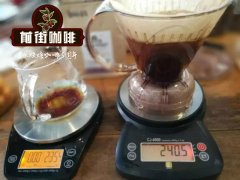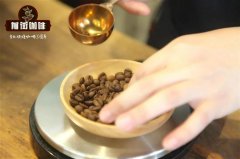The way of treatment will affect the aroma of coffee. There are two common methods of tanning and washing.

Professional coffee knowledge exchange more coffee bean information please follow the coffee workshop (Wechat official account cafe_style)
Sun, water washing, honey treatment, each has its own interesting!
Coffee beans are not born with dark brown beans. Coffee fruit is shaped like a red jujube fruit, each fruit has two coffee beans, the coffee fruit, coffee beans after processing, will be what we usually see. Coffee production includes harvesting, processing, peeling, picking beans, roasting, storage, grinding, brewing and other processes, in which the "treatment" step is one of the initial keys to affect the flavor of coffee.
There are many ways to treat coffee beans, which will affect the aroma of coffee. Here are two common ways of tanning and washing:
Washing method: the key point is that the coffee fruit is fermented after peeling, and the pectin is washed off with water after fermentation. One of the treatment methods used is that after the coffee fruit is picked, the immature fruit and miscellaneous leaves are removed, the peel of the fruit is removed, the beans are picked out, and then the beans are washed and soaked, so that the beans begin to ferment, allowing microorganisms and enzymes to decompose the ingredients of the beans and produce sour flavors. Water washing can also be a dry fermentation method, without soaking, and then wash off the pectin with water after fermentation. After fermentation, the beans are then sun-dried or baked to prevent coffee beans from getting moldy. Properly washed coffee beans usually taste mild and may have a wine flavor, depending on the environment and fermentation.
Sun method: after the coffee fruit is picked, pick out the immature fruit and miscellaneous leaves, directly expose the coffee fruit to the sun for 2-3 weeks, and remove the shell after drying. Because the pectin is still attached to the outside, it will have a pectin flavor. The fermentation degree of solarization varies according to the temperature and humidity of the dry environment. Lin Zhe-hao said that South Minas in Brazil is a tropical steppe climate region with strong sun exposure, low fermentation and nutty flavor, while in Latin America, most processes are highly fermented, full of fruity and wine aromas. In addition, the use of mechanical drying of whole fruit drying is also called solarization.
After the processing of coffee beans, first pick out defective beans, leaving intact coffee beans, and then after varying degrees of roasting, will eventually be able to have ever-changing flavor and taste. The subtle differences in each step between coffee production and brewing will affect the quality and flavor of coffee, which is why the world of coffee is so spiritual and fascinating.
END
Important Notice :
前街咖啡 FrontStreet Coffee has moved to new addredd:
FrontStreet Coffee Address: 315,Donghua East Road,GuangZhou
Tel:020 38364473
- Prev

The coffee beans treated by the sun are rich in flavor. The coffee beans treated with water are cleaner and sour.
You may have heard a saying: Japanese beans taste richer than tasty beans, and water-washed beans are more sour than dry ones. Is that really the case? The taste of coffee beans can be seen from the way coffee beans are handled. Imagine the smell of coffee from the processing process today. First of all, make one thing clear: processing process = fermented coffee beans.
- Next

Steaming is a very important link in the process of making hand-brewed coffee.
Professional coffee knowledge exchange more coffee bean information Please pay attention to the coffee workshop (Wechat official account cafe_style) steaming is a very important link in the process of making hand-brewed coffee. Good steaming can fully infiltrate the coffee powder and activate the coffee activity, thus making the coffee extraction process more smooth. The steaming time of hand flushing is related to the degree of baking.
Related
- What is the meaning of lactic acid fermentation with coffee bean treatment?
- How to judge the state of foam by sound?
- How does the latte pull out the unicorn pattern? Come to get for a little trick to improve the flower pull!
- Will flower pulling affect the taste of the latte?
- Do you know the history of coffee?
- The difference between honey treatment and sun washing what is raisin honey treatment?
- What kind of milk can a novice use to make coffee foam to keep the foam longer? The correct method and skills of milking tutorial sharing
- Why do washed coffee beans taste sour? Flavor characteristics of washed Coffee
- Introduction to the skill of how to practice the size and height of water injection around the circle of hand-brewed coffee
- How do beginners practice coffee flower drawing from scratch?

